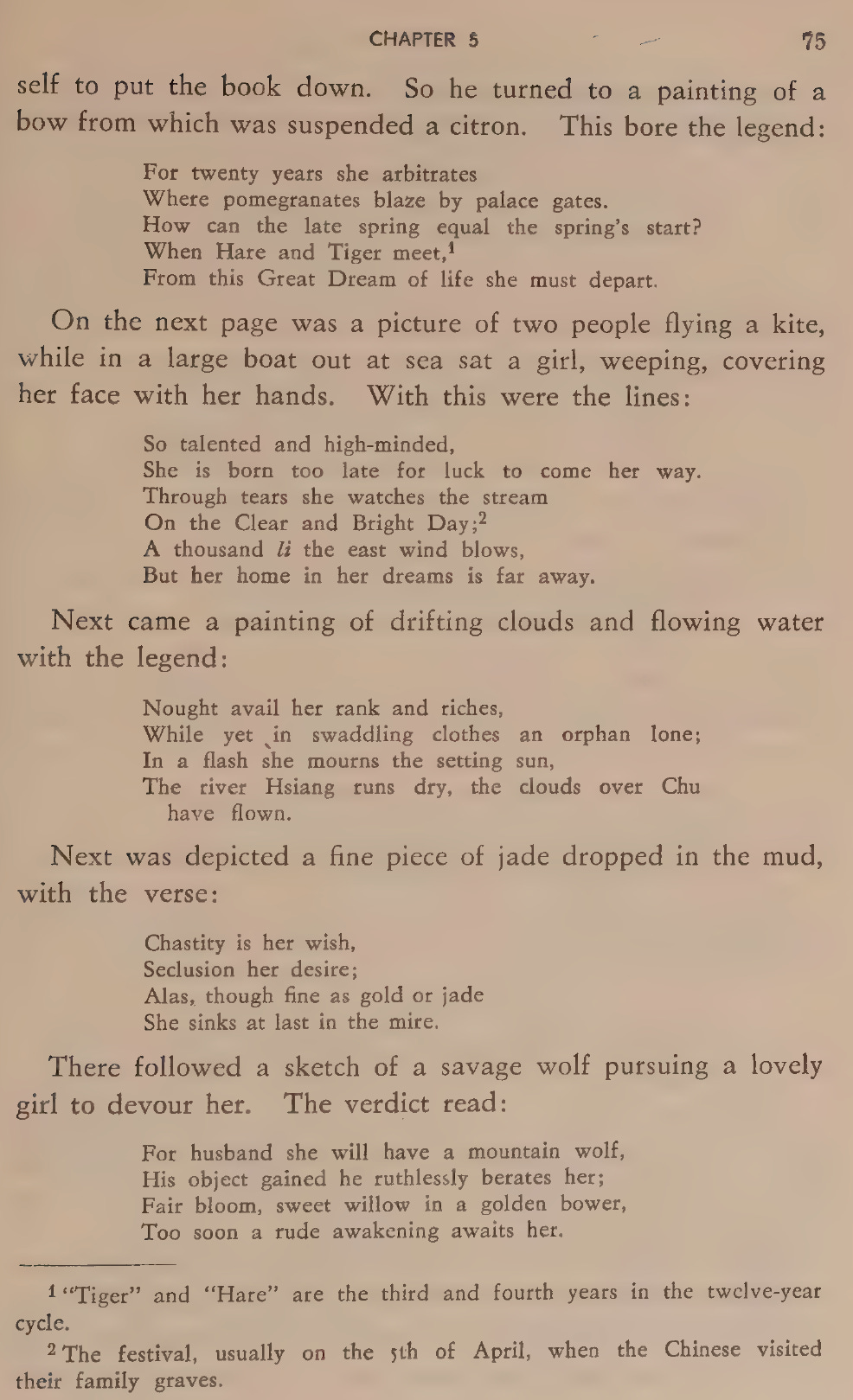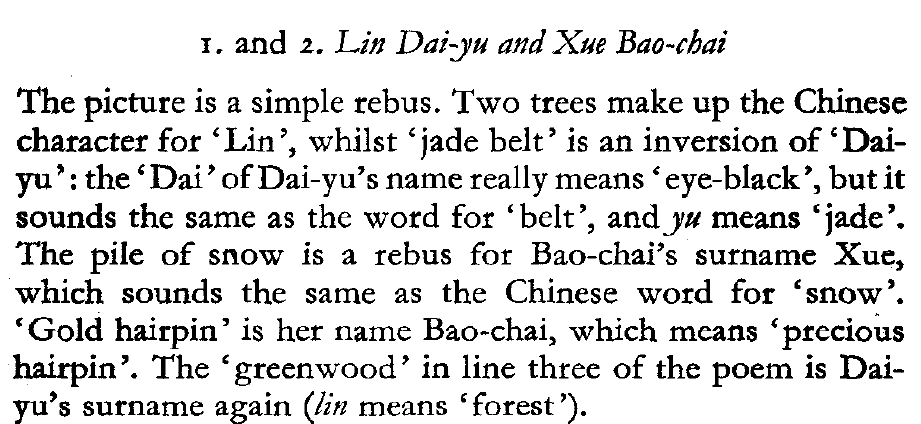Spoiling The Story To Explain The Poems
In my opinion, the worst thing you can do at this part of the book is start to spoil things.
However, this leaves the translator in a lurch. If you want to explain the predictive poems fully, you really have to make direct references to events that have not yet occured in the book. And, yet, if you keep things really cryptic, you risk alienating and even offending your reader.
I guess we all take a different approach. Gladys Yang and her husband, for example, decided to use footnotes:
But, of course, the footnotes don’t really help enough. What is the “mountain wolf,” for example? Why the reference to “the river Hsiang” and “the clouds over Chu?”
David Hawkes decided to provide full explanations in the appendix to Volume I, even though he had only printed 26 out of the 120 chapters so far. Remember that The Story of the Stone was published slowly in five volumes and was released only gradually from 1973 to 1986.
Hawkes’ appendix is filled to the brim with spoilers:
Now, if you read the Chinese original as if you had no idea about the book beforehand, some of these poems would actually make some sense. For example, I’m confident that I can share the breakdown of the first poem without spoiling anything:
Now, you’ll notice that Hawkes attributes poems 1 and 2 to Lin Daiyu and Xue Baochai, which is incorrect. Poem 2 is clearly about Jia Yuanchun, a character stuck behind the walls of the palace who we won’t meet for quite a few chapters.
The problem here is that there is a series of songs after these poems. Hawkes is trying to make the poems and songs line up — and, sadly, he’s made a mistake.
But then comes the spoiler issue.
When he writes about the poem we read in yesterday’s translation post, Hawkes spoils a story that we won’t know about until sometime around chapter 79.
Is that the right way to handle these poems? Or should the translator allow the text to open itself to the reader naturally, without giving full explanations of everything ahead of time?





